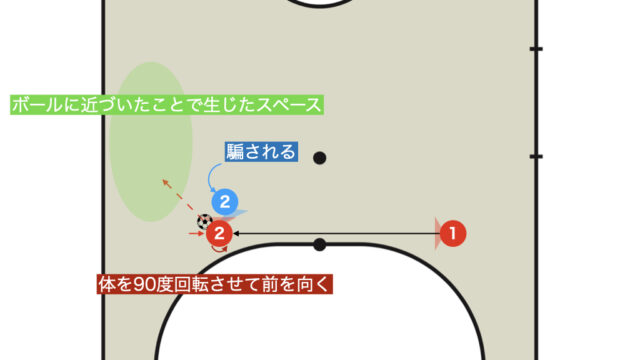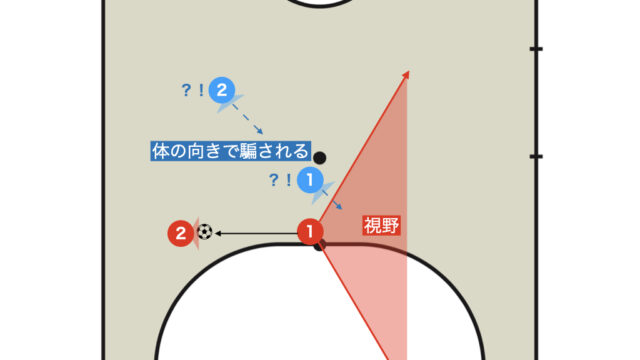Any group tactic, when broken down in detail, ultimately relies on individual performance.
Of course, individual defensive tactics are the most fundamental defensive skill and are required of every DF.
This article explains the basics of individual defensive tactics, including how to apply pressure, defending against the dominant foot, and bilateral defending.
Maintaining proper distance to avoid being outflanked
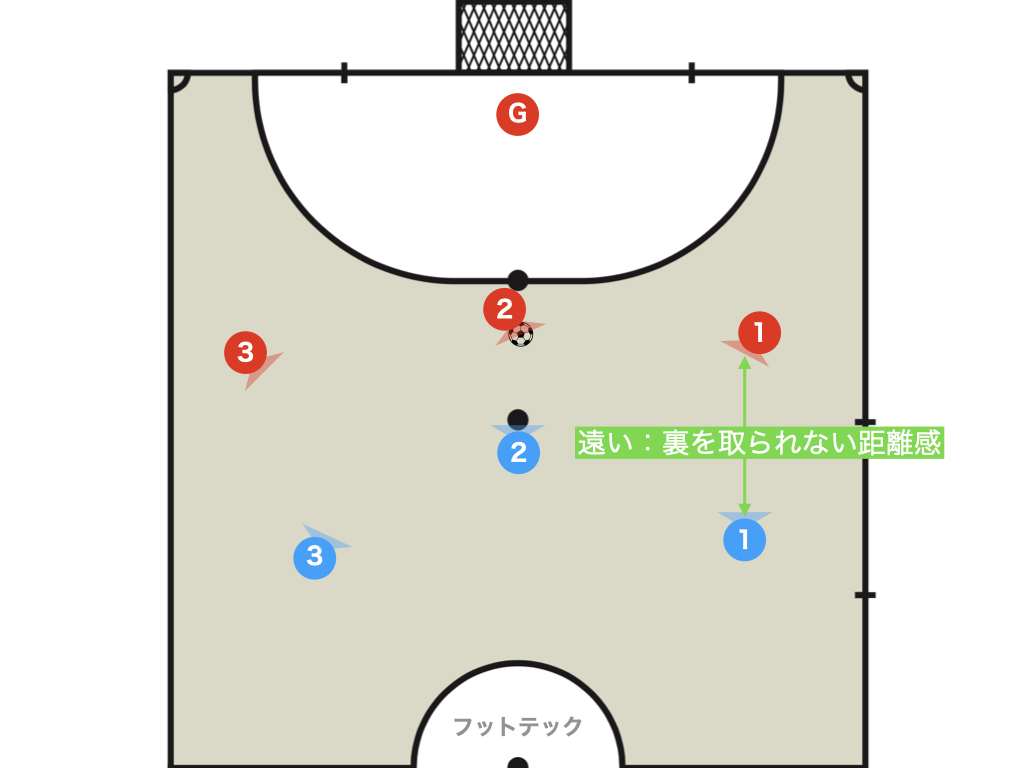
It is extremely important to be aware of the starting positions when initiating a press.
Ensure you do not allow your opponent to be outflanked while remaining as close as possible—that is, maintaining a distance that is neither too close nor too far.
This is because being too close makes it easy for your opponent to exploit a back door, while being too far prevents an effective coordinated press.
How to apply pressure
Anticipation and the start

Anticipate the pass from the ball holder, and start your movement at the moment the pass is made.
If your anticipation is premature, your opponent can exploit that by getting behind you, so it is crucial to carefully read their movements.
Stopping
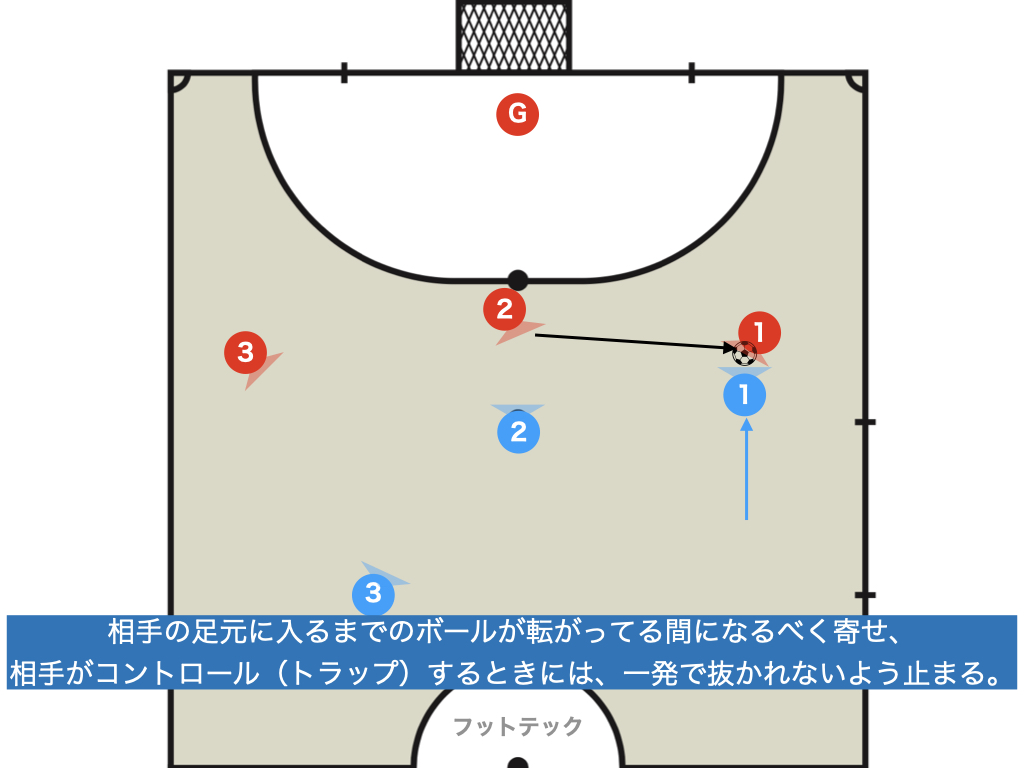
While the ball is rolling and no one else touches it, its trajectory remains predictable. Rush with full effort, and when your opponent traps the ball, come to a quick stop so as not to be easily bypassed.
If you do not come to an abrupt stop to prepare for any move from your opponent, you can easily be exploited with one-twos or contrapie and similar tactics.
Restricting your opponent’s play
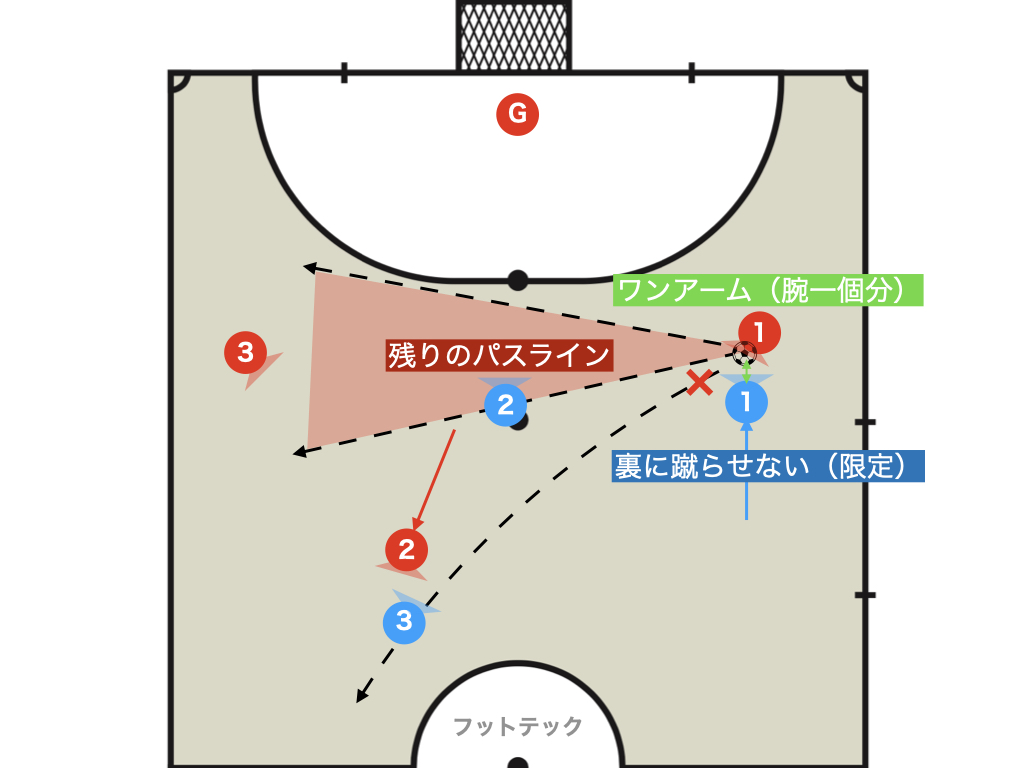
The tactical role of the 1st DF is primarily to restrict your opponent’s play.
Rather than merely closing in, aim to reduce the distance to about one arm’s length, preventing your opponent from executing a back door pass.
Defending against the dominant foot
In every situation, it is a fundamental principle to be mindful of the ball holder’s dominant foot when defending.
When the opponent is oriented opposite to their dominant foot: cut slightly inward
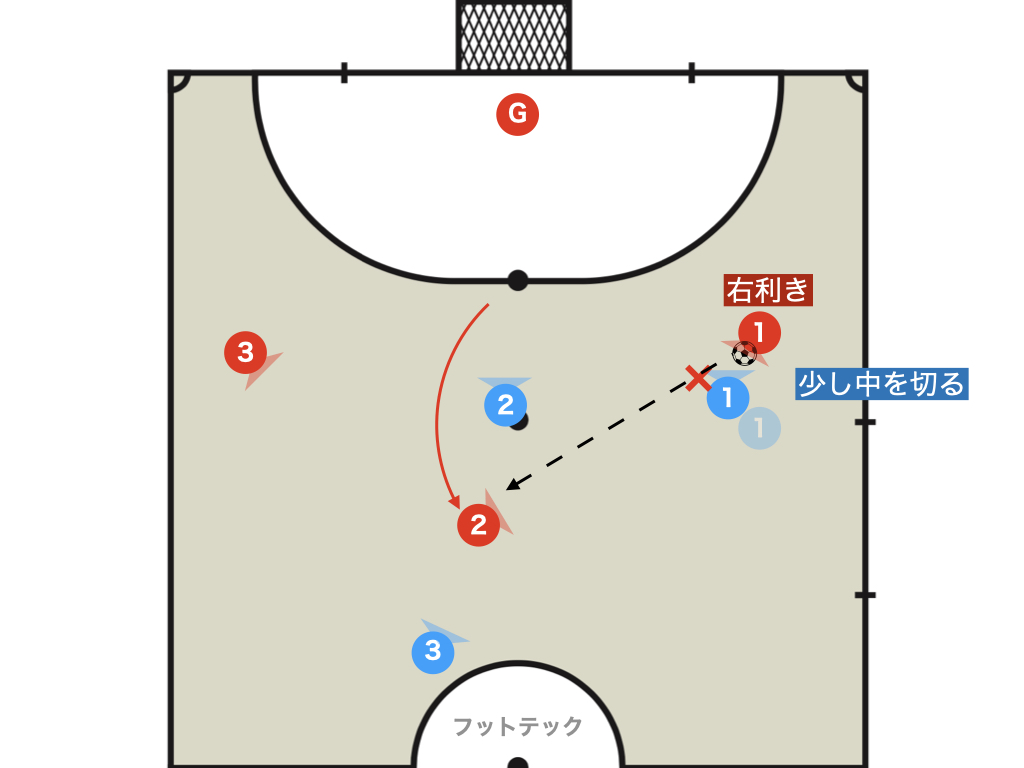
When the ball holder’s dominant foot is on the opposite side, their body naturally turns inward, so the key is to cut slightly inward.
In the above image, the 1st DF cuts slightly inward to block the passing lane between the lines.
This allows the 2nd DF to focus solely on the horizontal passing lane without having to worry about the space between the lines.
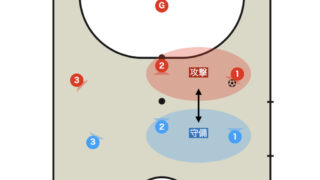
When the opponent is oriented on the same side as their dominant foot: cut vertically
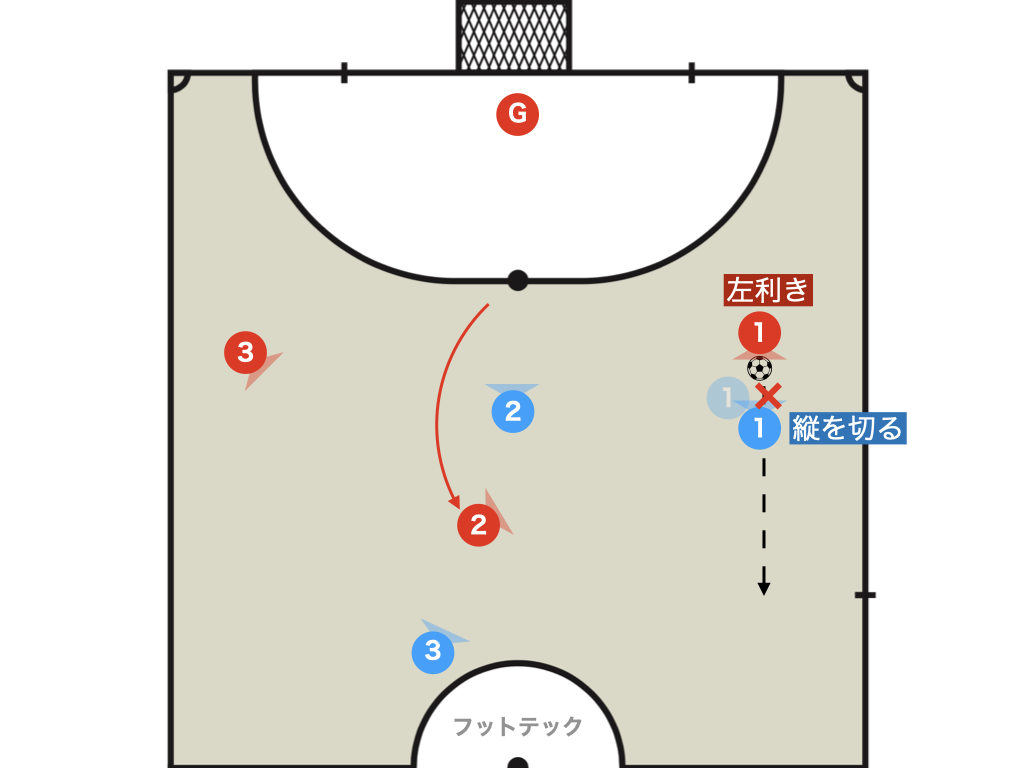
When the ball holder’s dominant foot is on the same side, their body faces vertically, so cut along a vertical course.
This type of defense against the dominant foot is particularly important in defensive transition.
Here, we have explained defense against the dominant foot following basic principles. However, if your team has a set play model—for example, intentionally cutting inward to channel the opponent vertically or cutting vertically to channel them inward—please prioritize that. Conversely, if no such strategy exists, adhering to these fundamental principles is considered the logical approach.
What is bilateral defending?
Definition of bilateral defending
- Defend using the foot closest to the opponent’s ball-holding foot or the direction their body is facing
- Do not rely solely on your dominant foot when defending
- Defend in such a way that your feet do not cross, preventing you from facing backwards
Defending against cut-ins
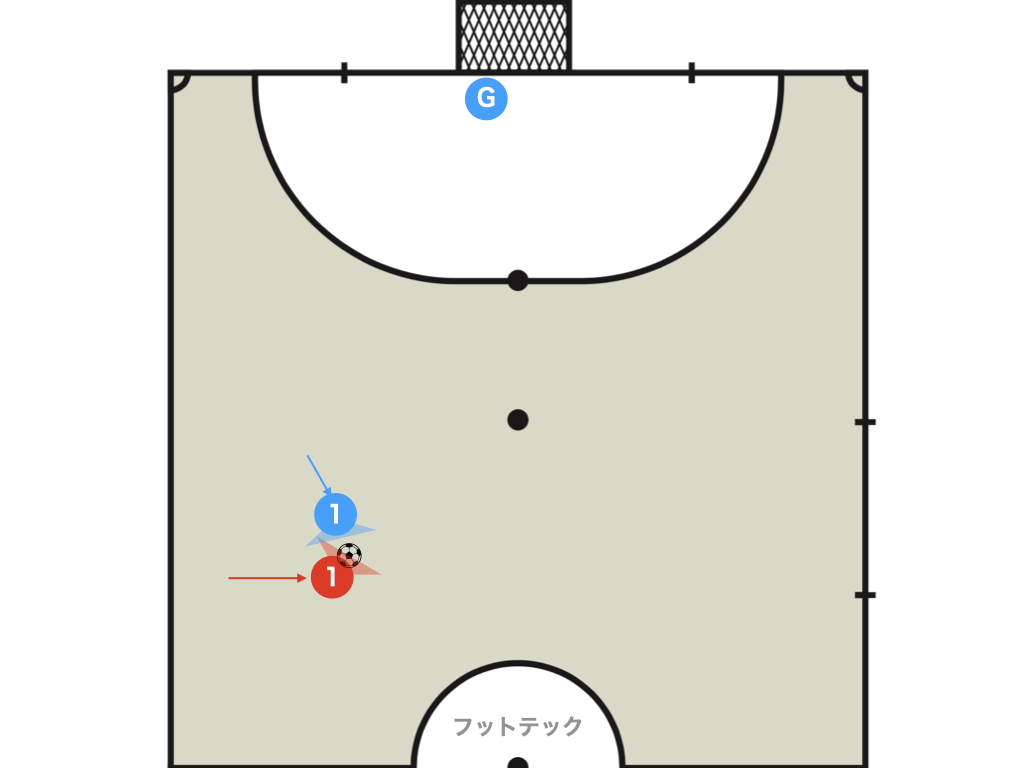
If you can intercept the ball in this manner, you can transition into an attacking transition while still facing the goal.
Defending against vertical dribbles
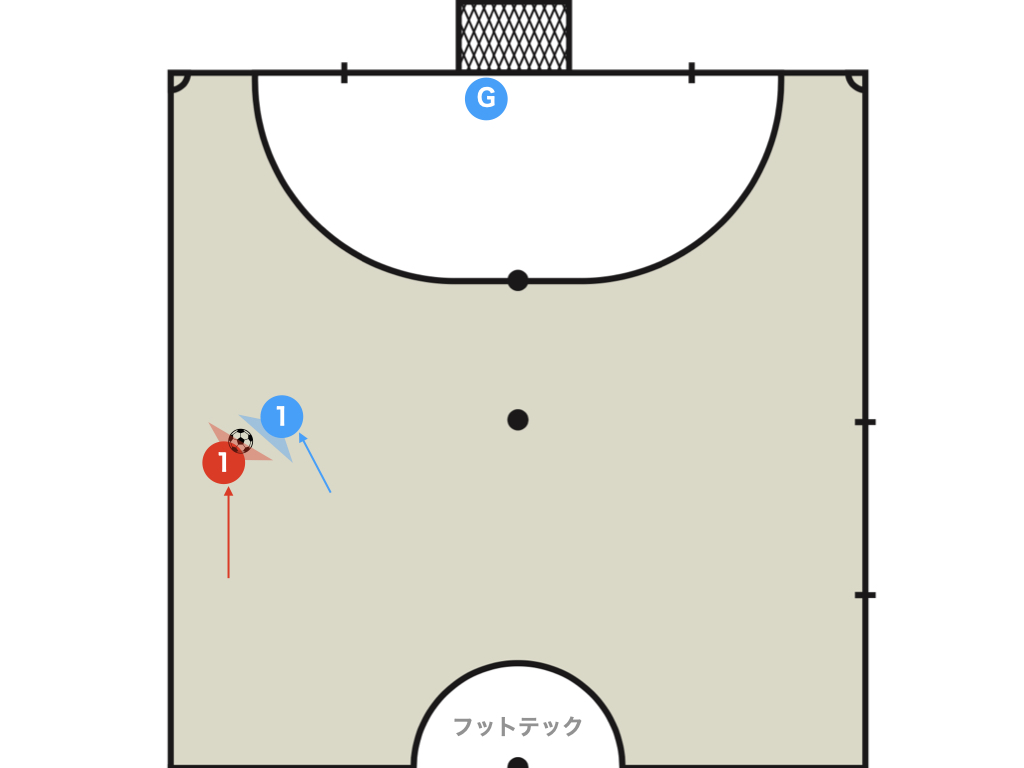
Although quick, light defending aimed at making an immediate challenge may result in this body posture, do not mistake light defending for using both feet.
It is crucial to step in sync with your opponent’s movements and remain close, always ready to attack the ball.
Poor example
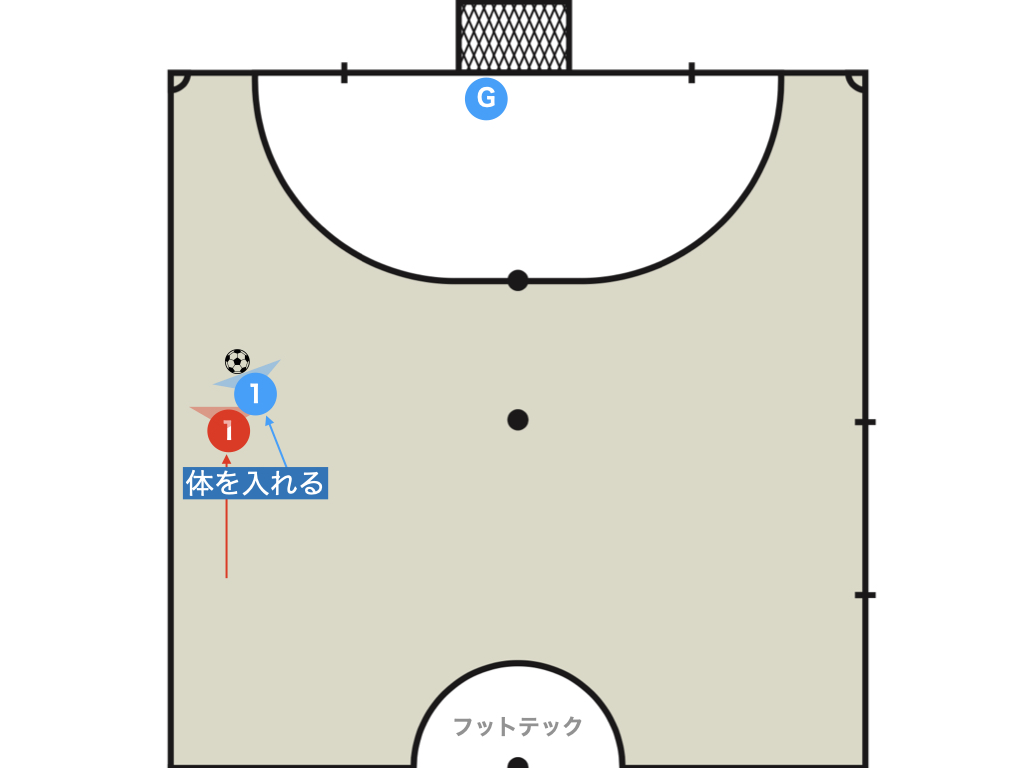
Even if you win the ball, if your body is facing your own goal, you have no option but to play a back pass.
Practice drills
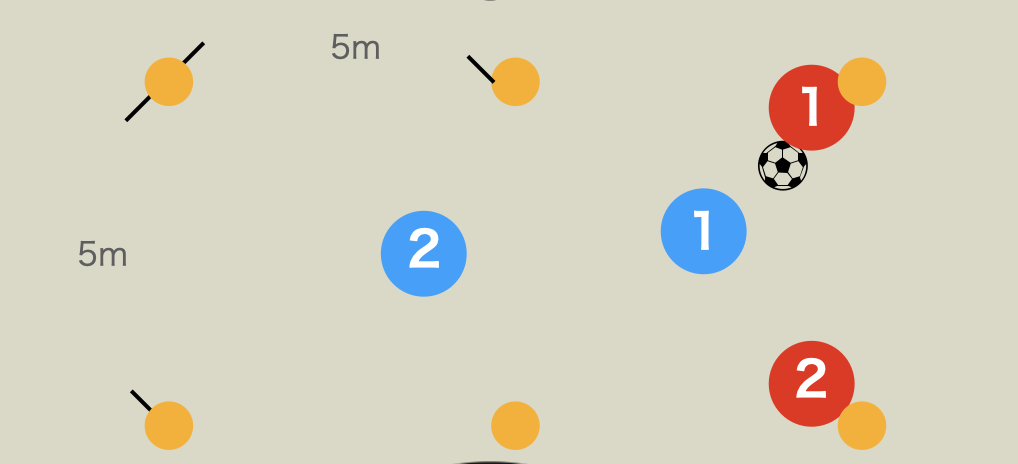
- Defend only within your designated box (5m × 5m)
- Attack using a three-touch under
- If you turn your back on your opponent, you lose – be mindful of using both feet in defense
- For attack, once you cross the furthest line, it counts as a win, and defense comes in quick succession
This drill is famous both as practice for duo and situational judgment, and it is also effective as a DF training exercise to cultivate bilateral defending.
Professional foul
When you are completely outmaneuvered and facing a dangerous situation, executing a deliberate foul—a professional foul—can be very effective.
However, rather than fouling recklessly, it is important to be mindful of the foul count and the remaining match time when committing a foul.
Also, be cautious not to trip an opponent from behind—as this could lead to serious injury. Instead, focus on safe professional fouls such as pulling the uniform or grabbing the waist.
Thank you very much for reading this article to the end.
If you found this article useful, please consider sharing it using the social media share buttons above.
We regularly share valuable insights on futsal tactics on Twitter, so if you haven’t followed us yet, we’d appreciate your support!
We are committed to raising the level of futsal in Japan by sharing high-quality information through discussions with individuals who have coaching experience in the F.League and overseas.
If you have any questions or notice any mistakes, feel free to leave a comment below.
We update our articles regularly, so if you’d like to keep reading, please bookmark our site or search for “FutTech”!

